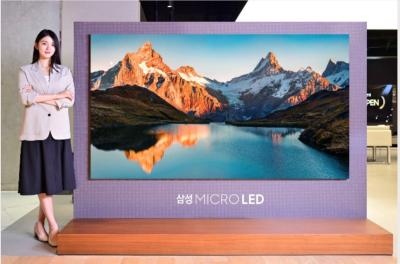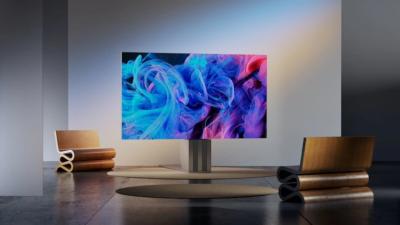MicroLED technology is a next-generation emissive display technology that promises highly efficient and bright displays that offer superior image quality with infinite contrast and a wide color gamut.
MicroLED can be applied to displays of many kinds - from small displays for smartwatches and AR devices to large-area TV displays.
Tiled MicroLED TV displays
One unique feature of microLED technology is the ability to create seamless large-area displays made from small display tiles. This unique feature is interesting because it can creates extremely large displays in which the cost grows linearly with display size, unlike standard LCD and OLED TV displays which grows exponentially more expensive as display grows.
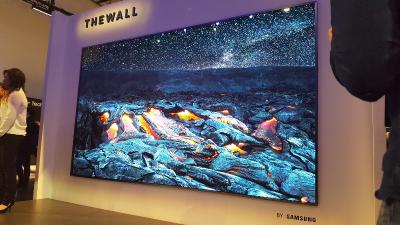
The Wall by Samsung
Several companies developed such tiled display technology, including Sony, Samsung, Konka, LG and others. Tiled large-area microLED TVs are available on the market today, but prices are very expensive and these are highly premium devices. Are you looking to buy such a TV? Check out our 2021 MicroLED TV buying guide. Not much has changed from 2021, as microLED TVs are still extremely expensive ($100,000 and over).
One interesting thing to note is that while most so-called microLED TVs are indeed emissive displays, the actual LED chips inside these TVs are not always miicroLEDs, but sometimes actually mini-LEDs (this is true for example in Samsung's TVs, at least for the first-gen models).
Consumer MicroLED TVs
Companies are also developing consumer-grade MicroLED TVs. The main challenge is bringing the cost down by a factor of around 100X, even if targeting the premium consumer TV market. Producing such consumer MicroLED displays at competitive prices is a huge challenge due to the extreme number of microLED chips - a 4K TV requires almost 25 million individual microLED chips - and these need to be produced on a wafer and transferred to the final TV substrate.
It will likely take many years before consumer MicroLED TVs at affordable prices can be produced.
Danvas announced a microLED luxury digital art canvas
Luxury display maker Danvas announced its premier Series G display, for digital art collectors. The company says that the microLED display will "accelerate the world’s appreciation of digital artists and their work by validating artwork ownership through a signature NFT authentication indicator and by allowing a buyer’s entire collection to be displayed in a truly exceptional next-generation display".
The Series G, designed by the Ammunition Group, is based on a microLED display that can be deployed in a square (4x4 feet) or portrait or landscape formats (3x4 feet). We do now have any more information on the display, and if it is indeed a microLED display, which if so it is likely to be tiled.
RAPT develops unique touch solutions for microLED displays
The COVID-19 pandemic created an increased demand for high quality IT solutions, including monitors and collaborative tools, which prompted LCD and OLED display makers to develop new solutions for this market for applications like computer monitors, signage and more.
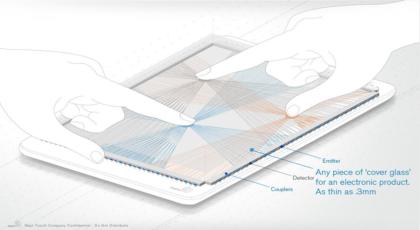
microLED displays (and also OLED displays) that are 20-inch or more will suffer from incompatibility with standard capacitive touch, because the thin microLED display panels result in large parasitic capacitive coupling with the touch surface. The dynamic driving of microLED (where only lit pixels draw current) further reduces the capacitive touch performance by introducing unpredictable “display pattern noise”. These issues are easily mitigated in small area displays, but as displays increase in size, the performance and costs of capacitive solutions suffer.
Samsung faces technical problems with its microLED TVs
Samsung is offering high-end microLED ultra-premium TVs, and has recently made plans to start producing smaller-size LTPS-based panels in an attempt to widen the market (even though prices are still extremely high and volume is very low).
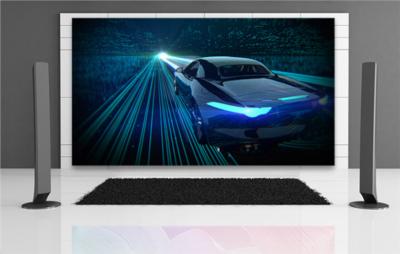
According to a new report from Korea, however, not only that Samsung cannot really find customers for its TVs (which isn't a surprise given the price), the TVs are also suffering from high defect rates - even in units shown in retail or showcase events. The report suggests that the high level of defects in the TVs have caused Samsung Electronics to decide to currently not expand its microLED TV lineup, and has postponed the release of 80-inch and 90-inch products indefinitely.
Leyard starts producing microLED displays with Saphlux's QD color conversion technology
LED display market Leyard Optoelectronics announced that it developed the world's first mass-produced microLED display that uses quantum dots color conversion technology. Leyard collaborated with Saphlux (of which it owns around 12%).
Leyard adopted Saphlux's NPQD R1 micro LED technology, and have completed the development and testing of the display technology, and now it can mass produce NPQD-powered displays.
C SEED announces a more affordable foldable microLED TV, still costs $150,000
Last year Austria-based C Seed released a high-end microLED TV, the $400,000 165" 4K C SEED M1, which has a unique foldable design, which makes use of seven large MicroLED panels that can be folded and inserted into the floor. The company now announced a smaller and more affordable microLED TV, the N1.
The N1 has a 103" 4K microLED panel, and it also is foldable, but it does not fold into the floor, but remains above the floor when not in use. The N1 costs $190,000 so this is still extraordinarily expensive. The N1 will also be offered in 137" and 165".
PlayNitride hopes to go public in Q3 2022, will be break even by the end of 2023
PlayNitride is planning for an IPO, and if all goes according to plan, the company will issue new shares and will start trading at the newly launched Taiwan Stock Exchange Innovation Board in Q3 2022.
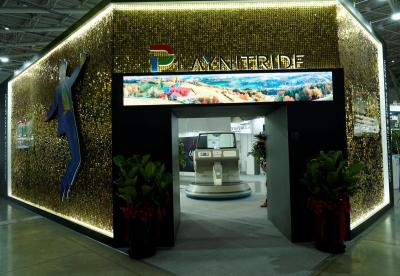
PlayNitride's CEO recently participated in an investor conference, during which he said that the company aims to be break-even (on a monthly basis) by the end of 2023, and to turn a profit in 2024.
Samsung to start producing 89-inch LTPS microLED TVs in Q3 2022
Towards the end of 2020, Samsung announced it's first "consumer" MicroLED TVs (on LTPS backplanes, rather than PCB used by Samsung for its professional models), including smaller 77-inch to 89-inch models. The smaller models were scrapped later in 2021, and then Samsung further delayed its plans for "consumer" microLED TV production.
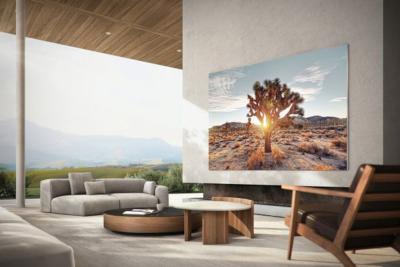
According to reports from Korea, Samsung decided to move the production of its MicroLED TVs from its Vietnam fab to its fab in Korea, and aims to start producing LTPS microLED TVs in Q3 2022. Samsung is likely to start with a 89-inch model which will hopefully ship before the end of 2022, and will carry a price tag of around 100 million Won (or around $77,000).
Samsung starts selling its 110-inch microLED TV in China, and already sold out the first batch
Samsung launched its 110-inch microLED TV back in 2021, with a price tag of around $150,000. Earlier this week Samsung started to offer it in China for 1.05 million Yuan, online at JD.com, and today it is reported that the company sold out its first batch of TVs.

It is not clear how many units did Samsung actually ship - and the web site still accepts reservations.
LG's shows a 136" 4K 0.7mm pitch Magnit microLED TV
LG Electronics has unveiled a new type of residential Magnit MicroLED TV, with a smaller pixel pitch than it showed before.
LG's new TV offers 4K resolution in 136", with a pixel pitch of 0.7 mm. LG's previous generation Magnit TVs offered a pixel pitch of 0.9 mm.
Porotech developed a technology that enables tunable microLED pixels
Porous-GaN material platform developer Porotech announced a new technology that it brands as DynamicPixelTuning that makes it possible to create full-color or tunable-color monochrome displays using identical pixels from a single wafer.
![]()
Porotech says that DynamicPixelTuning displays will offer high color uniformity without the use of complex fabrication processes. The technology is applicable for all microLED display types, from microdisplays to mobile displays to TV displays.
Pagination
- Previous page
- Page 5
- Next page
